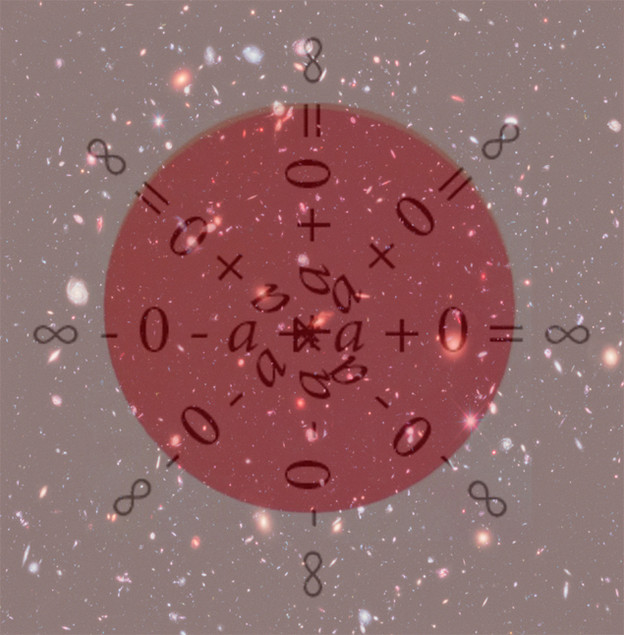Symbolic multiplication

I often think of quantum mechanics as the most conceptually radical of the breakthroughs in theoretical physics to emerge in the last and current century, in part due to its claim that physical reality cannot be definitively observed. The claim challenges Isaac Newton’s classical mechanics and the scientific method, which assumes that physical reality can be measured without ambiguity, and principles of nature can be determined with certainty.
Quantum mechanics changed the discourse about physical reality from “what is the truth about nature?” to “what is nature?” in much the same way, perhaps, as L=A=N=G=U=A=G=E writing changed the discourse from “what is the meaning of poetic language?” to “what is poetic language?” I see quantum mechanics functioning as an imaginative ecopoetics in physics through its proposal that at subatomic scales, the future position and momentum of particles can only be measured in terms of probability. Today, leading physicists are attempting to reconcile quantum mechanics with relativity into a single theory or description of physical reality.
According to his book, Physics and Philosophy (Harper & Brothers, 1958), Werner Heisenberg developed the uncertainty principle in quantum mechanics after reading Goethe’s Faust and considering the role of the imagination in scientific discourse. The uncertainty principle says that at subatomic scales, a particle’s position and momentum cannot be predicted because the present state of the particle cannot be known without ambiguity. While the mathematics used by Heisenberg’s mechanics was not new, the theory itself was original for developing what Max Born called “symbolic multiplication,” which illustrated that the commutative law of arithmetic (AB equals BA, i.e., 4 x 3 is the same as 3 x 4) is not valid in subatomic systems.
One outcome of Heisenberg’s symbolic multiplication is that a particle’s position multiplied by its momentum (AB), minus a particle’s momentum multiplied by its position (BA), was not zero, as it would be if the product of position and momentum commuted. Instead, a particle’s position multiplied by its momentum, minus a particle’s momentum multiplied by its position, is proportional to Planck’s constant, a physical constant of subatomic quanta that is non-zero. Since Planck’s constant is always non-zero, uncertainty is at play in measuring observable subatomic phenomenon of the present. By invalidating causality as well as attempts at measuring non-observable subatomic phenomenon, Heisenberg’s quantum mechanics suggests that the future position and momentum of subatomic particles cannot be calculated because the determining elements of the present cannot be known with certainty. This proposal of quantum mechanics marks a largely unacknowledged shift of when science became philosophy.
Many writers and readers of poetry consider poetry to be a philosophical activity, one that inhabits its claims through formal properties and contextual frameworks. If physics is the study of physical reality, what happens when physics becomes philosophy and when poetry, as a philosophical activity and symbolic language, becomes physics? These are some of the central questions of quantum poetics that I have been developing and which I think are timely to practitioners of both science and literature. Acting as a ’pataphysical correspondent, speculative documentarian, and poetry informant for this commentary series, I will be exploring these and other questions about literature and science; introducing what I call U+F+O+L+A+N+G+U+A+G+E; examining literary movements such as conceptual literature, post-confessional poetry, and visual poetry in relation to quantum poetics; and discussing specific poems, books, and authors who seem to be working — consciously or without intent — from concepts in relativity, quantum mechanics, string theory, and more.
Quantum poetics